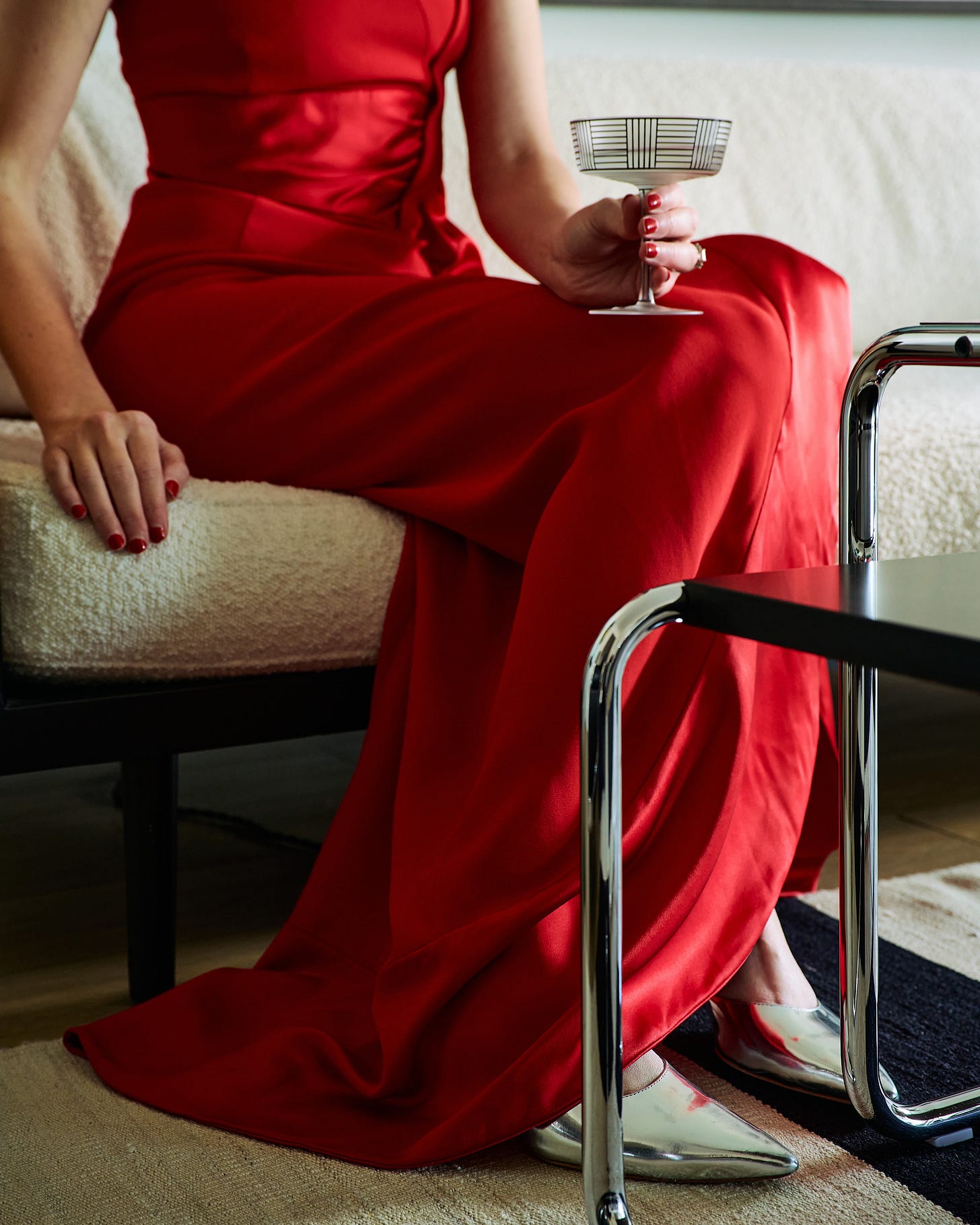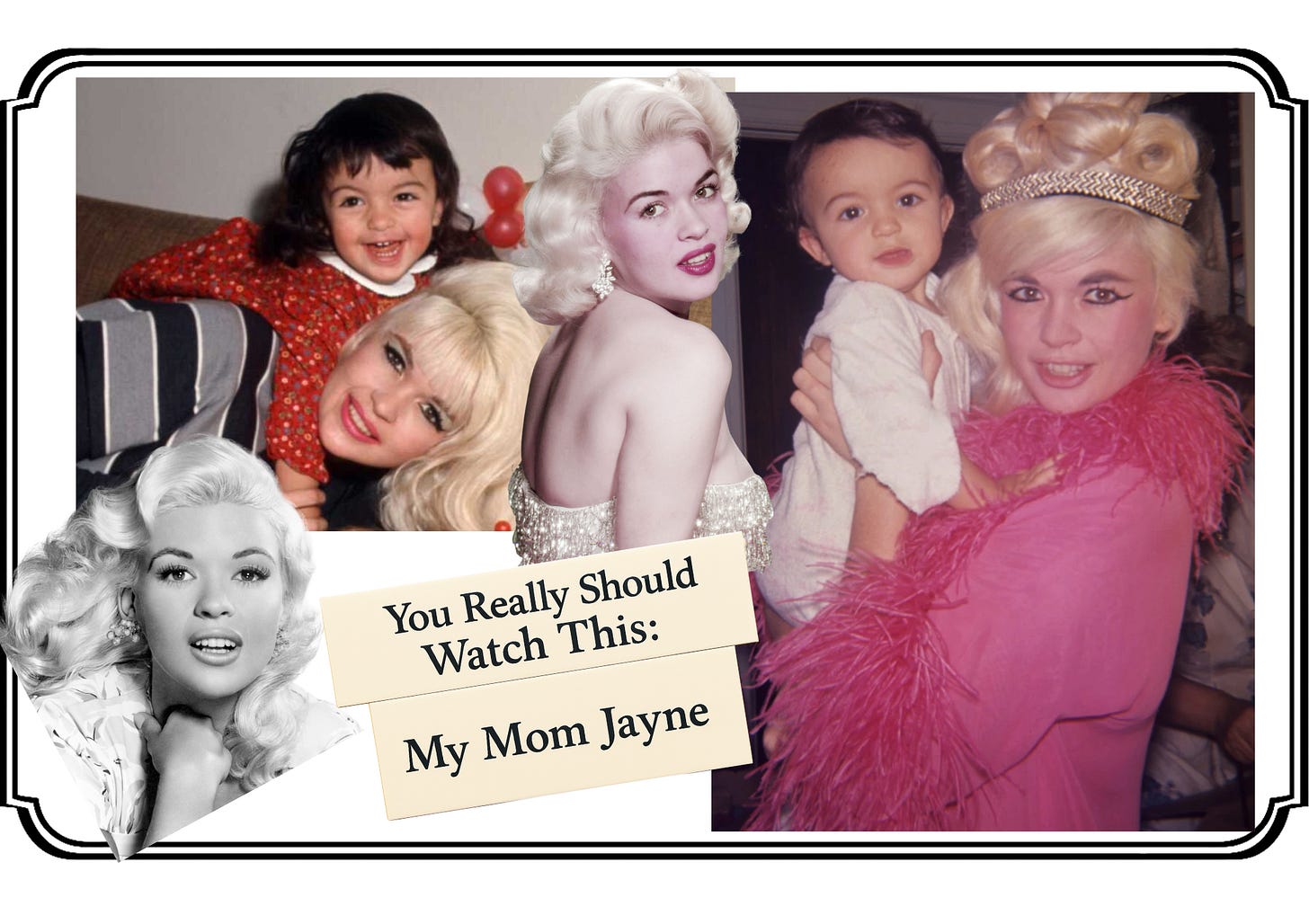Vintage Wedding Guest Dresses That Deliver, Per Lilah
Plus, more vintage shopping and culture recommendations for the week.
This week’s recommendations: It’s officially July, which means wedding season is in full swing—case in point, the Bezos-Sánchez spectacle in Venice, where the guest list dazzled but the fashion… left us wanting (and frankly, we’ve seen enough photos). If you’re still searching for the perfect RSVP-ready gown, I’ve rounded up runway relics ideal for dancing, dining, or posing aboard someone’s yacht. Elsewhere, this week’s “You Really Should Know This” spotlights Adele Simpson, the postwar designer who dressed First Ladies and ran her own label when most houses were helmed by men. I’m also recommending Mariska Hargitay’s tender, surprising documentary My Mom Jayne, Robin Givhan’s thoughtful new biography of Virgil Abloh, and—for couture week watchers—Demna’s final show for Balenciaga, streaming July 9.


High Stakes Glamour
There’s no surer bet than vintage Galliano-era Dior, and this Fall 2004 gown proves the point—literally, with its signature dice detail dangling delicately from one shoulder strap. A variation of Look 24 from the runway, it channels the same eau de nil romance and metallic shimmer that lit up Galliano’s Edwardian-meets-teddy-boy spectacle. While the show played with exaggerated silhouettes, kabuki makeup, and neon rockabilly references, this piece is one of the rare, quiet stunners: bias-cut, floral-sparkled, and pure Old Hollywood fantasy. Ideal for summer weddings—or any night worth the gamble.
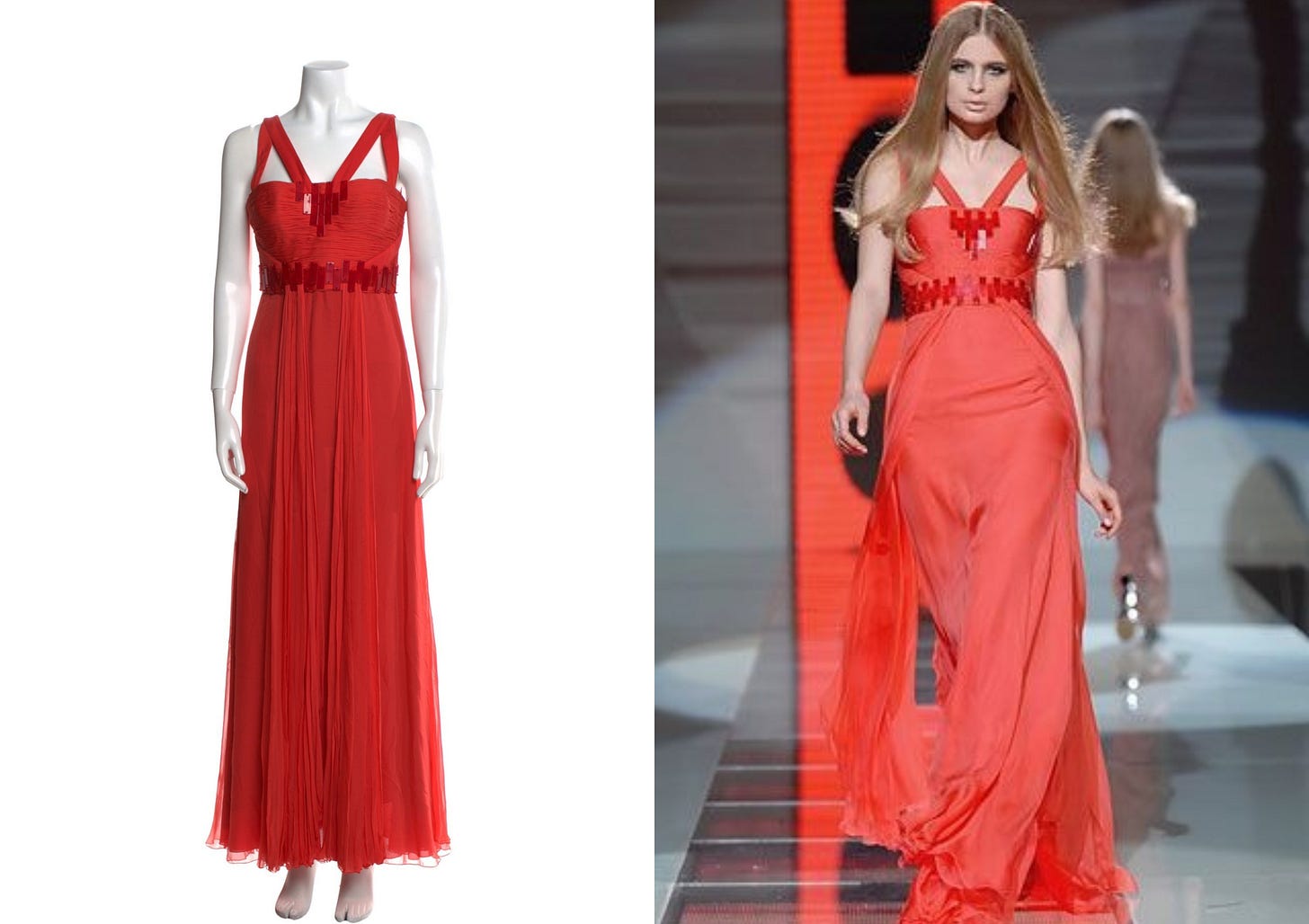
Power Surge
A jolt of saturated red silk, engineered to flatter and command—this Versace Fall 2007 gown is a high-voltage relic of Donatella’s minimalist moment. The structured bodice with tonal embellishment gives way to fluid pleats that glide with every step, all while recalling the sharp femininity that defined her now-underappreciated early-aughts work. “Bold color innovation combined with a pared-down, superprecise shape can make a collection jump this season,” Vogue wrote at the time—and this dress is a perfect illustration. As seen on the runway in Look 53, it’s proof that Donatella’s streamlined silhouette still packs a punch.

Asymmetrical Grace
Versace delivers what few else can: red-carpet-ready gowns with runway edge. This 2008 dress—Look 44, worn by Mariacarla Boscono—is a study in sculptural restraint: asymmetrical neckline, draped silk, and not a sequin in sight. It’s a reminder, as Vogue wrote, that “Versace can turn it on like that is a surprise to no one”—but what was surprising was Donatella’s pivot away from the “bling-vulgarity stereotype” to embrace something more architectural and refined. This dusty rose column fits that brief beautifully.

Two-Tone Muse
Frida Giannini’s Gucci was never louder than it needed to be, and this Fall 2007 gown—Look 45 on Raquel Zimmermann—is a masterclass in quiet drama. The asymmetrical black-and-ivory silhouette is offset by a single, crystal-embellished shoulder, offering just enough flash for a formal evening. As Vogue noted of the collection, “Giannini dropped the print and worked on a silhouette with...the right note of covered-up femininity,” bringing a touch of 1940s restraint to a house better known for excess. A rare runway piece under $900? Add to cart.
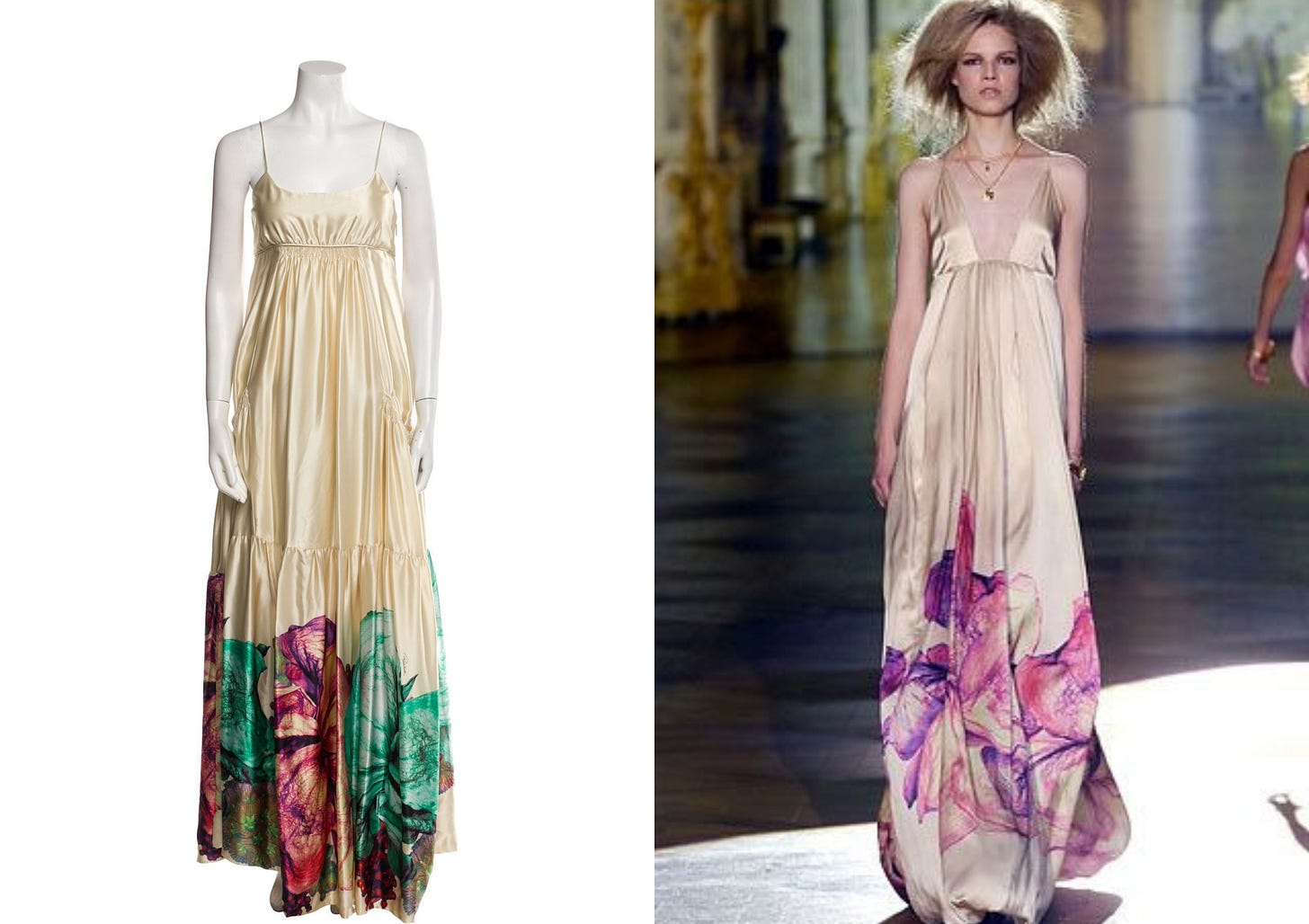
Petal Print Dream
A far cry from Cavalli’s usual flash, this Spring 2008 gown floats in on a soft-focus breeze. A variation of Look 42, it reflects the season’s surprisingly romantic tone. Made of silk with watercolor-scale florals blooming at the hem, this tented silhouette nods to Sarah Moon, Victoriana, and 1970s Chloé. Best worn with undone hair, minimal jewelry, and the faint suggestion of an afternoon wedding somewhere in Tuscany.
More Vintage Things—No Context Needed
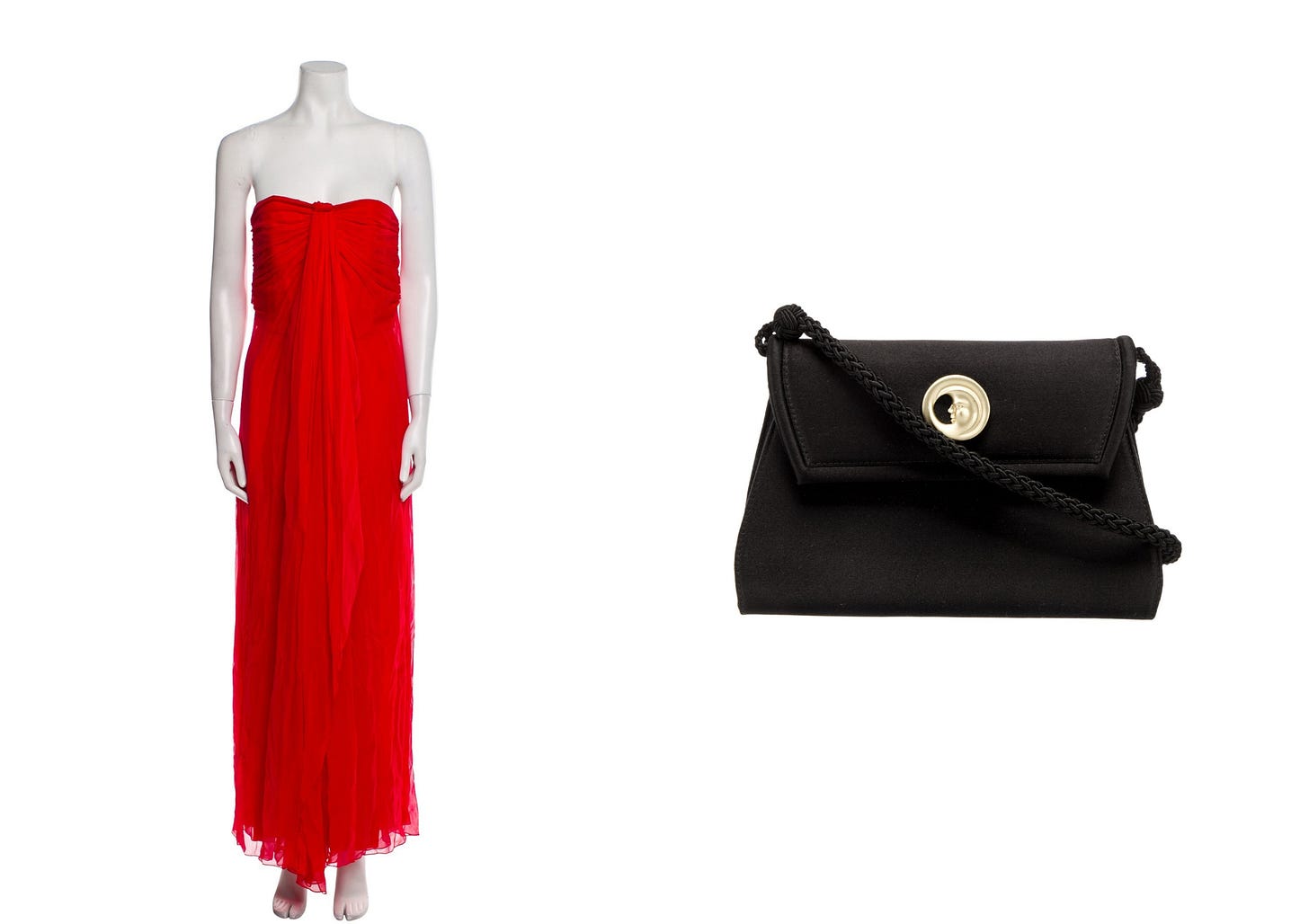


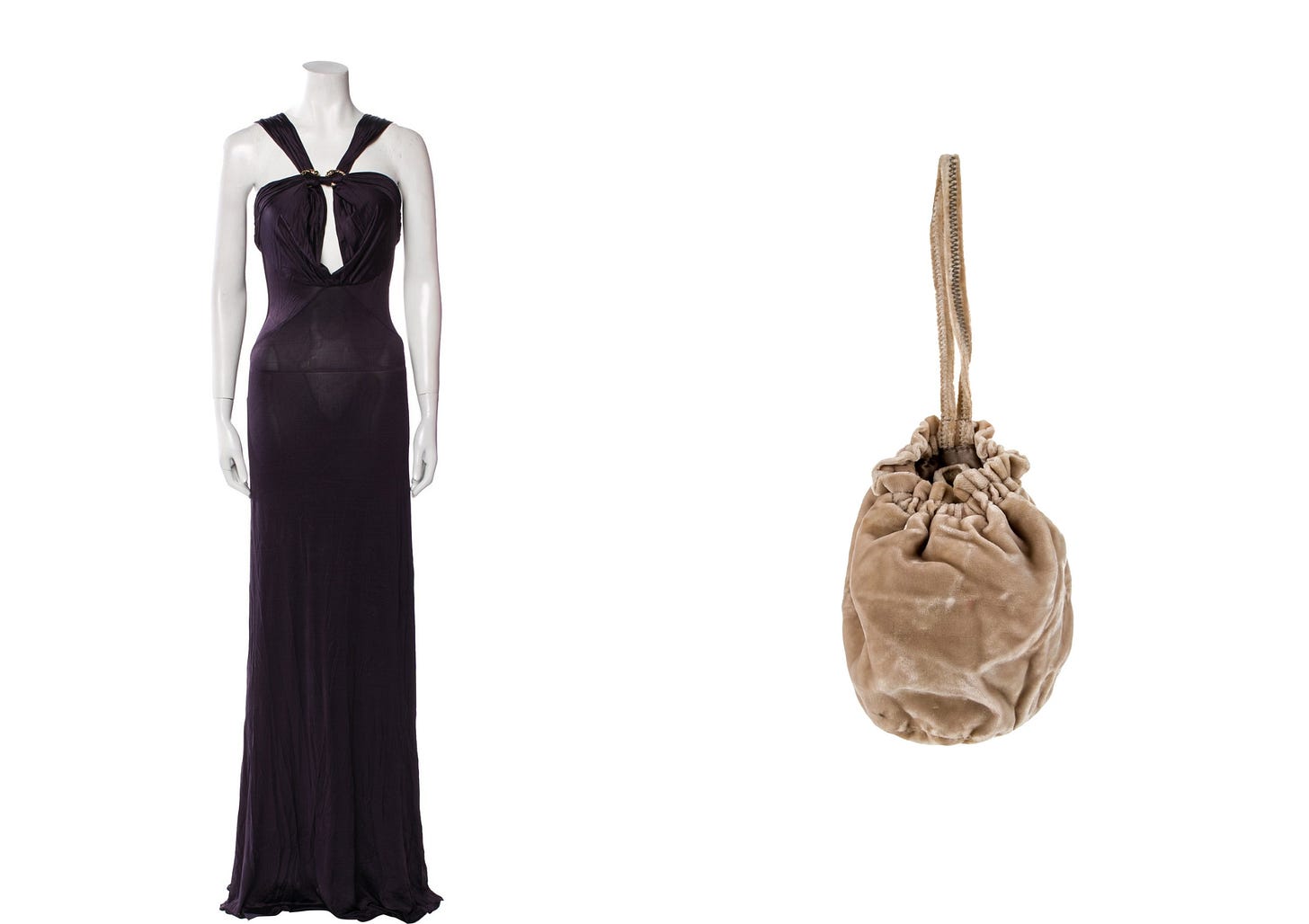

The McFadden Method
If you’ve been reading Per Lilah from the start, you’ll remember Mary McFadden as the very first “You Really Should Know This” designer. And if you’ve been looking ever since—congrats, your search ends here. These two gowns are textbook McFadden: Fortuny-pleated column shapes, intricate embellishment, and an elegance that bridges ancient and futuristic. One leans classic in gold with sheer beaded sleeves; the other, more maximalist, with an embroidered bodice in jewel tones and metallic threadwork. Wear either and prepare to be asked, “Who made your dress?”
Richard Tyler Returns
A recent “You Really Should Know This” subject, Richard Tyler continues to prove why his work is worth collecting. A master of tailoring with couture-level craftsmanship, Tyler built his reputation on engineering eveningwear with the precision of menswear—and the fluidity of silk. These two gowns illustrate the point: one, a crimson off-the-shoulder number with subtle pleating and hand-finished detail; the other, a sleek black-and-white one-shoulder column with architectural clarity. Galliano may have had theatrics, but Tyler had technique—and plenty of it.
You Really Should Watch This: My Mom Jayne
Mariska Hargitay’s directorial debut is more than a celebrity profile—it’s a moving act of familial excavation. In My Mom Jayne, Hargitay sets out to understand her mother, Hollywood bombshell Jayne Mansfield, not through biographers but through heartfelt conversations with her siblings. The result is what The New York Times calls “as much an experiment in autobiography as in biography,” likening it to Sarah Polley’s Stories We Tell for its tender complexity. The archival footage of Mansfield’s bubbly screen persona contrasts sharply with the intellectual, musically gifted woman her family recalls—offering a compelling meditation on legacy, grief, and identity. As the Times notes, “it is the exquisitely relatable messiness of this exceptional family tale that lingers.”
You Really Should Know This: Adele Simpson
Up above, I recommended a red Adele Simpson dress. This week, I’m making the case that you really ought to know the woman behind the label.
Adele Simpson, once one of the most commercially successful American designers of her day, was a pioneer of postwar ready-to-wear. She took the polish of French couture and translated it for the American woman—specifically the woman with places to be and people to see. Her wrinkle-resistant dresses and matching coats were tailored not for the runway, but for a life of luncheons, charity galas, and PTA meetings. Her fans included Lady Bird Johnson, Pat Nixon, and Barbara Bush, and her designs were stocked at Bonwit Teller, B. Altman, and Saks.
In a fashion world largely run by men, Simpson was an exception. She bought out her own label in 1949 and ran it for decades, often hitting the road herself with a traveling showroom of spring suits and cocktail dresses. She believed that women didn’t just dress for fashion—they dressed for their lifestyle. In her words (or at least her actions): you could take a page from Paris, but you had to sell it in Peoria.
By the late 1950s, Simpson’s namesake company was doing $7 million in annual sales—no small feat, considering her pieces retailed for $95 to $495 (the equivalent of $1,000 to $5,000 today). That scale didn’t mean she skimped on craftsmanship. “The care in assuring fit,” the Times wrote, “is equal to that taken by couturiers.”
She retired in 1985, and the line folded soon after. But her work—well-cut, feminine, and made to last—still turns up on vintage racks. And when you slip into one of her dresses, you can feel the quiet power of a woman who designed with conviction, and succeeded on her own terms.
You Really Should Read This: Make It Ours by Robin Givhan
A compelling and clear-eyed portrait of the late Virgil Abloh from Pulitzer Prize–winning critic Robin Givhan. Through biography and cultural history, she charts how Abloh—“prodigious, polymathic and perpetually online”—crashed fashion’s inner sanctum with little formal training but limitless ambition. As The New York Times notes, Givhan suggests that Abloh’s greatest feat was emotional: “He made a lot of folks feel like they were inside fashion’s hallowed walls standing alongside him…Abloh made people feel like they belonged.” A must-read for anyone interested in where fashion’s been—and where it’s going.
You Really Should See This: Demna’s Final Couture Collection for Balenciaga
It’s the end of an era. Demna’s reign at Balenciaga wasn’t always in tune with the house’s founder—who Chanel once called “the only true couturier”—but it was never boring. From towel skirts and destroyed sneakers to IKEA bags, packing tape heels, and “couture” hoodies, Demna gleefully dismantled fashion’s boundaries. But in 2021, he did something no one expected: he brought couture back to Balenciaga for the first time since 1968.
That debut, as chronicled in AnOther Magazine, was part resurrection, part rebellion—crumpled taffeta, opera coats that looked unearthed from tombs, couture jeans lined in silk. “This is the house where couture for me is innate,” he told Alexander Fury. “I felt it was my obligation.” And so, with a reconstructed salon, models in silence, and the scent of leather from Cristóbal’s old elevator wafting through the air, Demna reinserted Balenciaga into the haute couture conversation.
Now, with his final show for the house, Demna closes the book on his Balenciaga chapter and prepares to begin a new one at Gucci. Whether you loved his work or loathed it, you can't deny this: fashion will be a little less provocative without him.
Streaming July 9 at balenciaga.com




